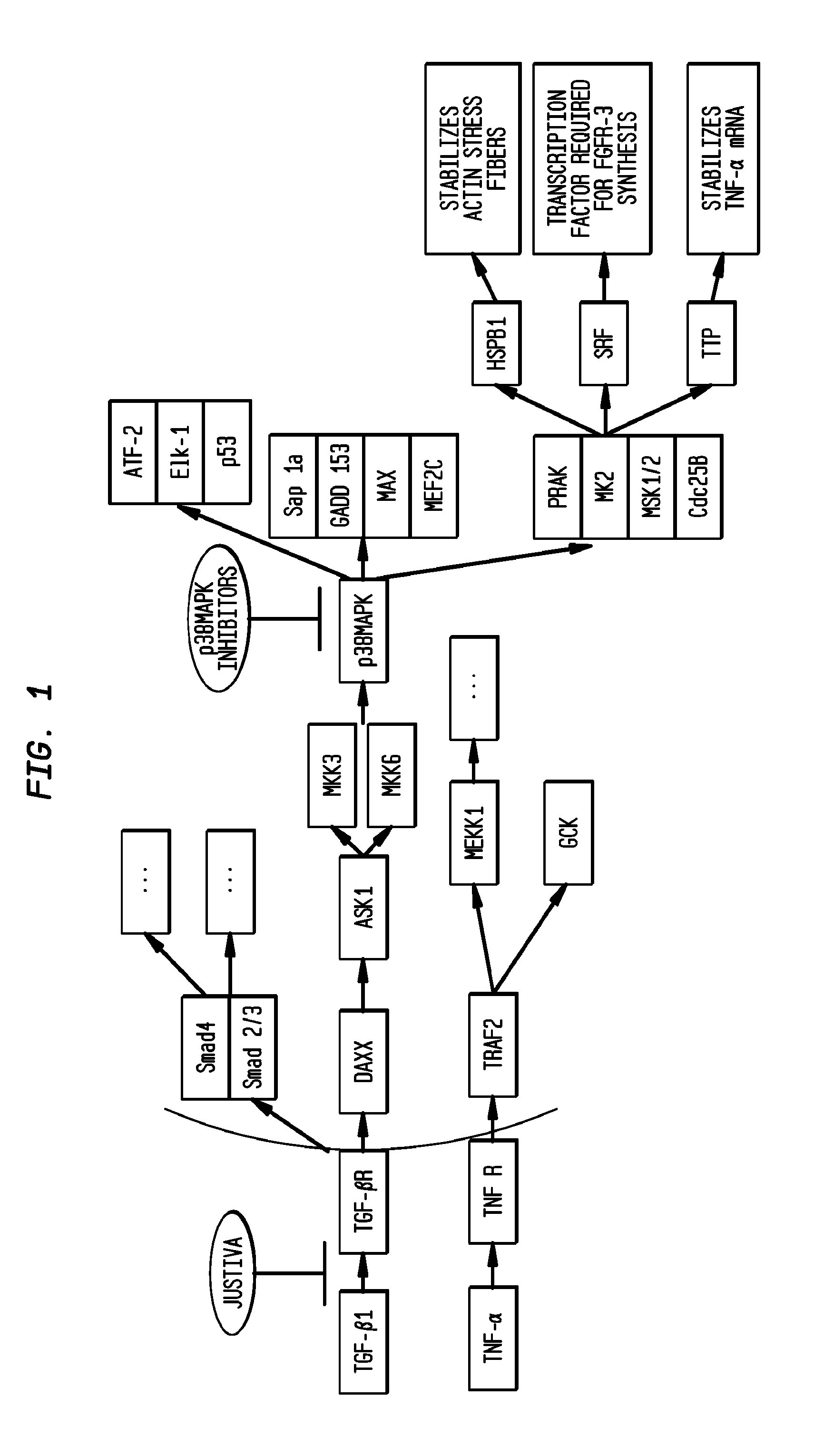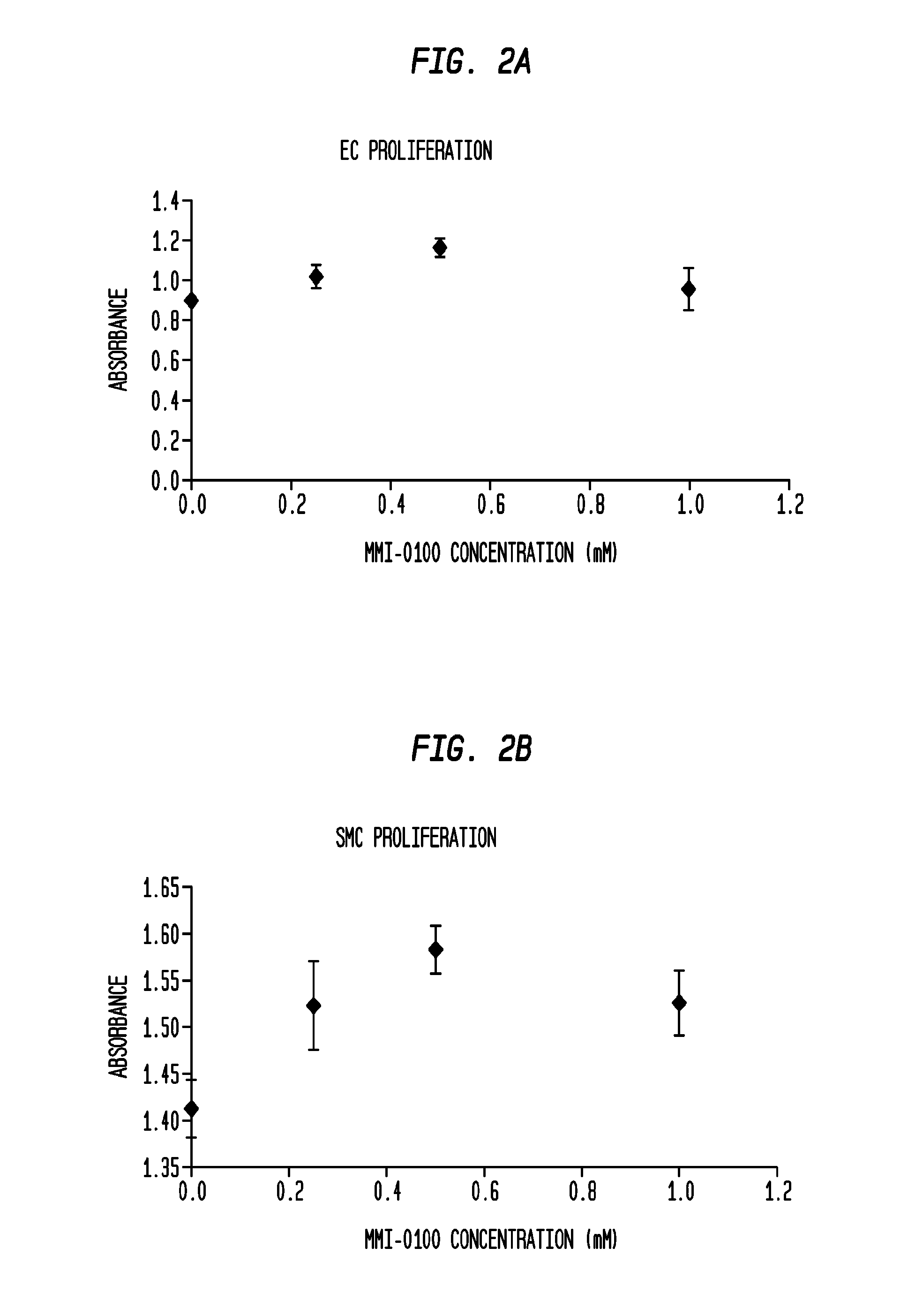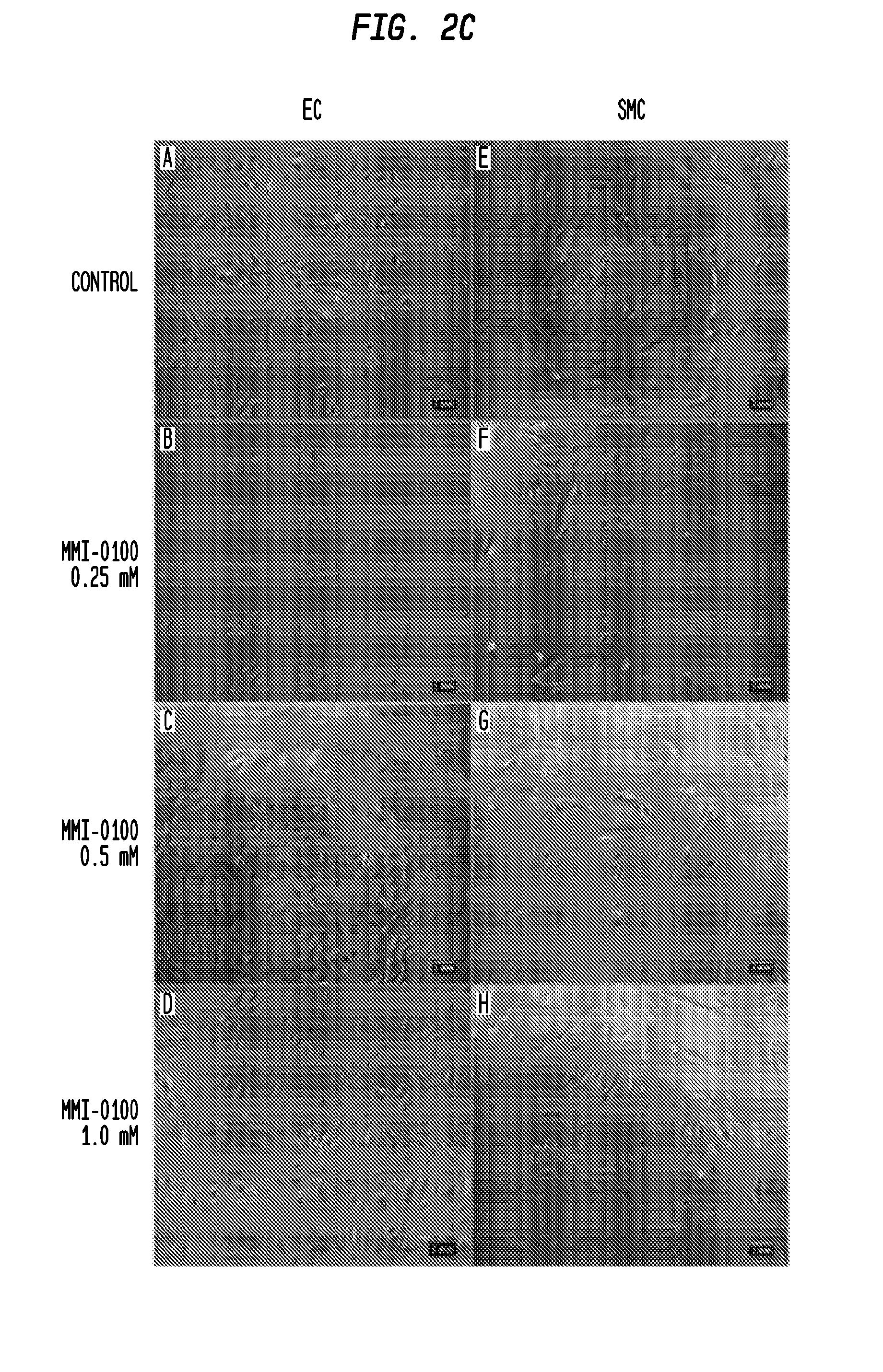Methods for treating or preventing vascular graft failure
a vascular graft and stenosis technology, applied in the field of cell and molecular biology, polypeptides, and therapeutic methods, can solve the problems of retrograde thrombosis and failure, vascular graft failure may be attributed, and the ability of the vascular graft to catalyze its reaction no longer, so as to reduce the stenosis of the vascular graft, reduce the intimal hyperplasia, and reduce the vaso
- Summary
- Abstract
- Description
- Claims
- Application Information
AI Technical Summary
Benefits of technology
Problems solved by technology
Method used
Image
Examples
example 1
Development and Test of MMI-0100 (YARAAARQARAKALARQLGVAA; SEQ ID NO: 1)
[0297]A cell-penetrating peptide inhibitor of MK2 has been developed and optimized to promote its cellular uptake.
[0298]Peptide Synthesis and Purification
[0299]Peptide Synthesis
[0300]The MK2 inhibitor peptide YARAAARQARAKALARQLGVAA (MMI-0100; SEQ ID NO: 1) and its functional equivalents were synthesized on Rink-amide or Knorr-amide resin (Synbiosci Corp.) using standard FMOC chemistry on a Symphony® Peptide Synthesizer (Protein Technologies, Inc). The coupling reagent for the amino acids (Synbiosci Corp.) was 2-(1H-Benzotriazol-1-yl)-1,1,3,3-Tetramethylruonium Hexafluorophosphate (HBTU) / N-Methylmorhorline (NMM). Following synthesis, the peptide was cleaved from the resin with a trifluoroacetic acid-based cocktail, precipitated in ether, and recovered by centrifugation. The recovered peptide was dried in vacuo, resuspended in MilliQ® purified water, and purified using an FPLC (ÄKTA Explorer, GE Healthcare) equippe...
example 2
MMI-0100 (YARAAARQARAKALARQLGVAA; SEQ ID NO: 1) Induces Minimal Cell Proliferation
[0313]In order to determine the effect of pharmacological doses of MMI-0100 (YARAAARQARAKALARQLGVAA; SEQ ID NO: 1) on human endothelial cell (EC) and smooth muscle cell (SMC) proliferation, human EC and SMC cultures were treated with three concentrations (0.25 mM, 0.5 mM, and 1 mM) of MMI-0100 (YARAAARQARAKALARQLGVAA (SEQ ID NO: 1)) following pre-treatment with TNF-α. Both 0.25 mM and 0.5 mM concentrations of MMI-0100 (YARAAARQARAKALARQLGVAA; SEQ ID NO: 1) slightly increased cell proliferation in both cell types compared to control cells treated with 20 ng / ml TNF-α alone (maximum with 0.5 mM: 30% and 12% increases in EC and SMC cultures, respectively; FIG. 2, A-B). However, while the 1 mM MMI-0100 (YARAAARQARAKALARQLGVAA; SEQ ID NO: 1) treatment also increased both EC (11%) and SMC (7%) proliferation as compared to control, this response was not as robust as that induced by treatment with 0.5 mM MMI-01...
example 3
Dose-Dependent Inhibition of TNF-α and IL-1β Expression by MMI-0100 (YARAAARQARAKALARQLGVAA; SEQ ID NO: 1) in vitro
[0314]Lipopolysaccharide (LPS) is a compound with both lipid and carbohydrate components, derived from the cell wall of gram-negative bacteria. In vivo, infection of gram negative bacteria releases LPS into the blood stream, which activates monocytes. In response, the activated monocytes secret various inflammatory mediators, e.g., Tumor Necrosis Factor-alpha (TNF-α) and Interleukin-6 (IL-6), to combat the infection. Phorbol 12-myristate 13-acetate (PMA) is a compound that activates a wide variety of cell types that may contribute to acute inflammation. Particularly, PMA is known to activate human monocytic cells (THP-1 cells) in vitro. Thus, an inflammatory cellular response (e.g., release of inflammatory cytokines) can be induced in vitro by activating THP-1 cells with PMA and subsequently treating the activated THP-1 cells with LPS.
[0315]The ability of MMI-0100 (YARA...
PUM
| Property | Measurement | Unit |
|---|---|---|
| diameter | aaaaa | aaaaa |
| concentration | aaaaa | aaaaa |
| concentration | aaaaa | aaaaa |
Abstract
Description
Claims
Application Information
 Login to View More
Login to View More - R&D
- Intellectual Property
- Life Sciences
- Materials
- Tech Scout
- Unparalleled Data Quality
- Higher Quality Content
- 60% Fewer Hallucinations
Browse by: Latest US Patents, China's latest patents, Technical Efficacy Thesaurus, Application Domain, Technology Topic, Popular Technical Reports.
© 2025 PatSnap. All rights reserved.Legal|Privacy policy|Modern Slavery Act Transparency Statement|Sitemap|About US| Contact US: help@patsnap.com



